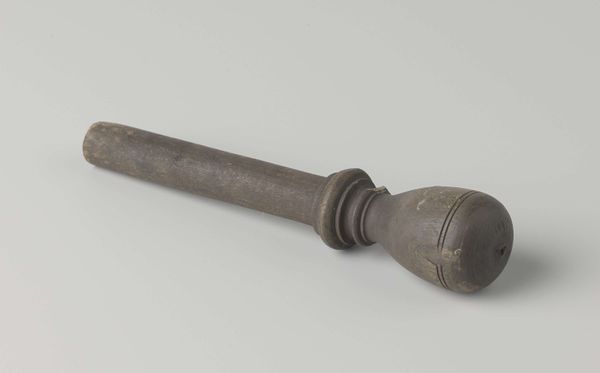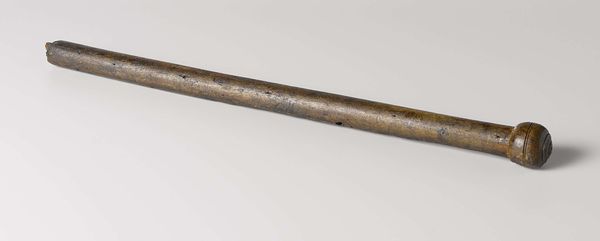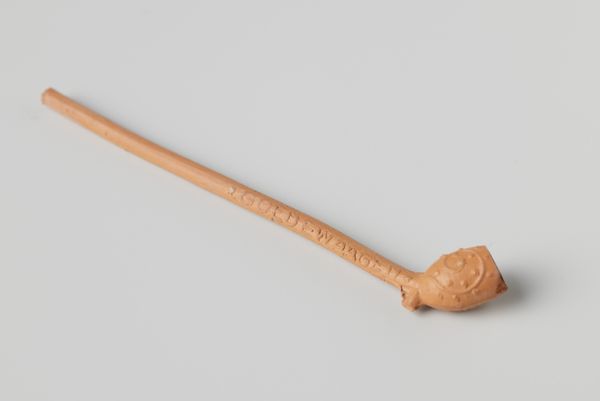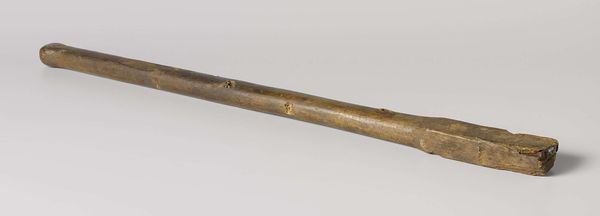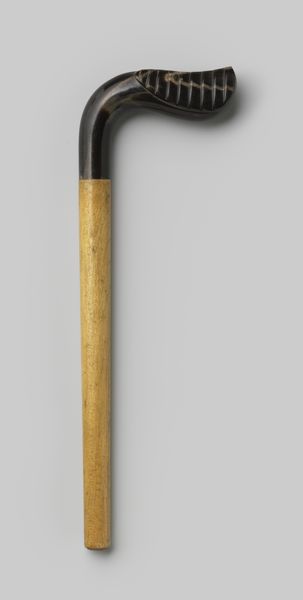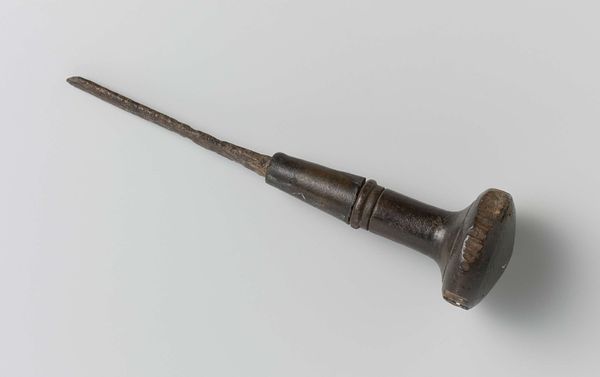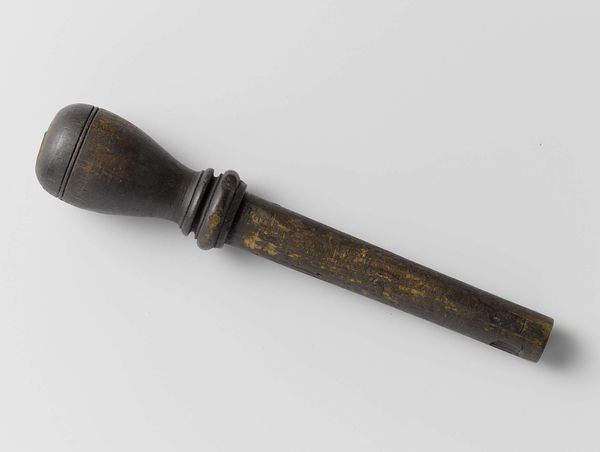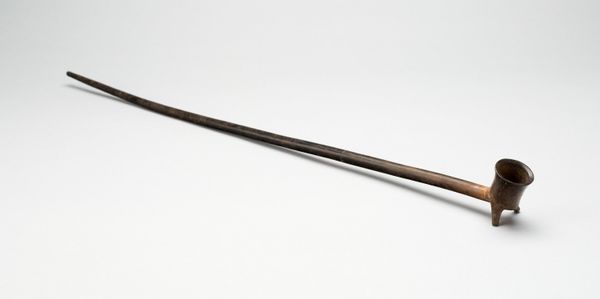
sculpture, wood
#
sculpture
#
sculpture
#
wood
#
statue
Dimensions: 13 1/2 × 1 1/2 in. (34.29 × 3.81 cm)
Copyright: Public Domain
Curator: Here we have a striking wooden sculpture from the Yaka people, simply titled "Pipe," dating to the mid-20th century. What strikes you initially? Editor: The sheer linearity of it! The long, pale wood shaft leads to a darkly carved head. It's almost unnerving how such different aesthetics meet so abruptly. Is it functional as well as artistic? Curator: It's important to remember that the Yaka culture imbues everyday objects with spiritual significance. Smoking, in many indigenous cultures, becomes a ritual act, a conduit to the spirit world. The "Pipe," although functional, transcends its utilitarian purpose. Editor: So, considering the Yaka emphasis on ancestor veneration, could the carved head at the bowl of the pipe depict a significant ancestor? And what's the historical context? Were these pipes exclusive to certain classes, perhaps chiefs or elders? Curator: Precisely! Among the Yaka, certain objects like this would symbolize status. The level of ornamentation, the quality of the carving, all communicated social standing. We need to think about colonization, too. Mid-20th century places it squarely within periods of intense colonial pressure. The pipe might be subtly encoding resistance, reaffirming indigenous identity in the face of foreign domination. Editor: It feels...assertive. Even with its slender form, it makes a statement about presence. But I wonder about the accessibility of this type of artistry given historical and present sociopolitical dynamics in Yaka communities? Has its original meaning changed, particularly with the increase of cultural appropriation in Western societies? Curator: Undoubtedly. Art objects that enter museum collections are subject to reinterpretation. It becomes our responsibility as viewers to unpack those layers, and reflect on issues of power, representation, and respect. Understanding that historical and current context is paramount. Editor: So the object invites a conversation far beyond aesthetics – sparking essential dialogues around cultural preservation and post-colonial narratives. Curator: Precisely. It reminds us art's inherent capacity to connect past injustices with present-day realities.
Comments
No comments
Be the first to comment and join the conversation on the ultimate creative platform.
